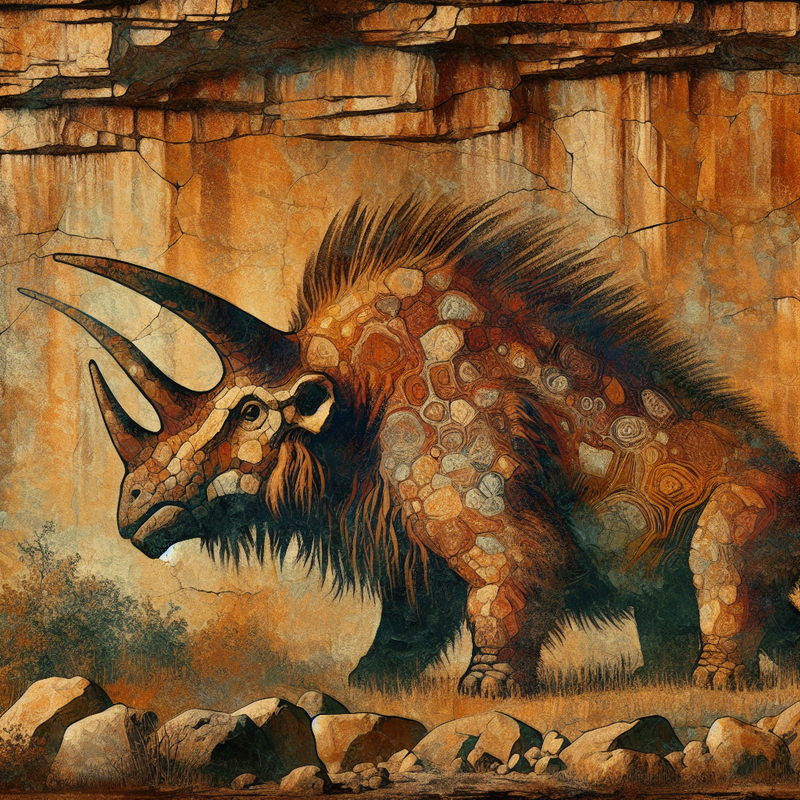In a South African cavern, a team of archaeologists has uncovered a striking cave drawing that could be over 200 years old.
Believed to illustrate an extinct species known as a dicynodont, which vanished long before the dinosaurs roamed Earth, this finding has captured the attention of the scientific community. This cave art pre-dates the initial documented identification of such creatures by scientists and has been attributed to the San people, critical figures in Africa’s ancient human history.
The primary investigator at the University of the Witwatersrand in Johannesburg, Julien Benoit, sheds light on this significant discovery. Benoit remarks, “Our findings suggest the San hunter-gatherers may have been among the first to encounter fossil remains, leading them to depict these ancient beasts in their rock art and incorporate them into their spiritual beliefs.”
Investigating Ancestral Perceptions
Nestled in the Free State Province’s La Belle France cave is the Horned Serpent panel, showcasing what initially seems to be a depiction of a walrus—a species unfamiliar to the sub-Saharan Africa region. Benoit and his fellow scholars consider the image to be of an animal unknown to modern times in the local ecosystem. With this in mind, they propose it might be a portrayal of a dicynodont inspired by a fossil.
Situated in a fossil-rich area known as the Karoo Basin, the cave’s location is a contributing factor in this hypothesis. Researchers ponder over the interplay of regional folklore and the scientific study of prehistoric life. Their findings point towards a deep-seated awareness within indigenous culture of these fossilized beings. “The Main Karoo Basin, along with other basins from the Karoo period, has been a goldmine of fossils, with humans inhabiting this African region for millennia. Therefore, the presence of indigenous fossil knowledge predating modern science is highly plausible,” report the authors.
Another layer of this artwork’s importance is added by suggestions it might have been crafted before the formal recognition of dicynodonts in science. “This depiction must have been completed at the latest by 1835,” asserts Benoit, “This places it a full decade before Richard Owen officially described the first dicynodont in 1845.”
Scholars and enthusiasts are divided on how to interpret this cave painting: is it a literal representation of an ancient creature, or does it stem from the San people’s spiritual imagination? While some argue for a mythological origin, the researchers defend their perspective that it could be based on tangible evidence of fossils.
They counter that many San artworks, even those with seemingly fantastical themes, are typically rooted in real fauna, as evidenced by the peculiar downward-facing tusks in this particular piece.
The team is hopeful that future investigations will uncover additional finds shedding light on how native cultures perceived and interacted with the prehistoric landscape. “Though irregular, the accumulation of ‘geomyths,’ place names, historical accounts, and archaeological records all support the notion that southern Africa’s local cultures had some understanding of the fossils in their vicinity and, in some instances, actively sought to interpret them,” the study asserts. These revelations are contributing to a larger dialogue regarding the profound and enduring influence of indigenous knowledge on the historical and scientific narrative, an avenue ripe for further research exploration.







